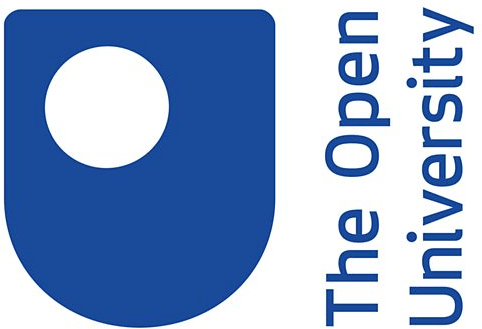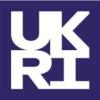Space Detector Scientist
Job Description
Weekly Working Hours: 37
Fixed Term Contract: End Date: 30 September 2026
Welsh Language: Not Applicable
:
About the Role
The position is being offered until the end of September 2026, however, an extension beyond this date will be considered if the expected external project funding allows nearer the time.
The Centre for Electronic Imaging (CEI) is a research centre based within the School of Physical Sciences at the Open University. The CEI is a collaboration between the Open University and Teledyne e2v, a world-leading manufacturer of scientific and industrial image sensors. The CEI is dedicated to conducting research into advanced imaging technologies for science applications and conducts its research in collaboration with many universities, agencies and companies including the UK Space Agency, European Space Agency (ESA), NASA and Teledyne e2v.
A main focus for the CEI is the development and characterisation of detectors for space missions. One such mission is the Habitable Worlds Observatory (HWO), NASA's next flagship space telescope. Current designs for HWO have a 6-8m main mirror, with instruments covering the ultraviolet (UV), optical and near-infrared wavelengths. The main science goal of HWO is the direct detection of life on other planets, and for this purpose, it will carry a broad instrument suite including a coronograph, a high-resolution imager, and a multi-object spectrograph.
The CEI is working with several UK and international research institutions, including NASA/JPL, on the development, testing, and verification of the performance of the UV-enhanced CMOS image sensors (CIS) towards implementing these as possible detectors for one or more instruments for HWO.
We are seeking to appoint an enthusiastic individual with experience in astronomy and/or detector physics to join the CEI HWO project team as a Space Detector Scientist. The successful candidate will be trained by the team as necessary to enable them to work within the CEI laboratories, with a focus on the development, test and space qualification of the UV-enhanced CIS devices for HWO and related calibration and correction procedures for in-flight operations of the HWO instruments. The role holder will be engaged in all aspects of the development, planning and calibration campaigns for the detector test and simulation activities designed to characterise and optimise the performance of the detectors for flight, while linking back to the UV astronomy science requirements.
The role holder will also need to liaise between the related teams at the OU, national and international research institutions, and wider technical and science collaborators. They will attend regular project meetings and conferences, deliver progress reports and interface with team members and external scientists and engineers from NASA/JPL, the University of Leicester, Mullard Space Science Laboratory, RAL Space, UK Astronomy Technology Centre, and others.
In addition, the role holder will have the opportunity to be involved in a variety of other research projects across the CEI, including other space missions and mission concepts for ESA (e.g. Euclid, SMILE, Theseus, X-ray interferometry) and NASA (e.g. the Nancy Grace Roman Space Telescope).
Key Responsibilities
- Have a leading role in the UV calibration and data correction activities of the CEI HWO project team (commensurate with the level of appointment).
- Be involved in the design and implementation of the laboratory test equipment used for detector calibration.
- Develop test plans for the appropriate testing of detector samples.
- Lead testing at external testing facilities with project partners.
- Interpret the results of the HWO detector electro-optical test, characterisation and radiation campaigns to provide insights into those results based on the project and science requirements, and to provide recommendations on operations to maximise HWO instrument science performance.
- Professionally document role activities and contribute to the CEI HWO project documentation and data deliverables to relevant HWO working groups.
- Produce academic publications based on the data acquired as part of the detector calibration.
- Work closely with the CEI HWO project team to ensure that the work progresses in a timely manner and report any problems.
- Attend regular project meetings, workshops and conferences. Report progress verbally and in written form.
- Support external collaborators as directed by the Project Lead.
- Promote knowledge and technology exchange with Teledyne e2v and other project collaborators and contribute to the wider research activities of the CEI, where required.
Essential:
- A PhD in Physics, Astronomy, Engineering, or a closely related subject.
- Experience with running experiments and working in a laboratory environment.
- Proficiency in coding in MATLAB, C/C++, Java and/or Python (or similar) development environments.
- Good problem-solving and analytical skills, demonstrated logical and rigorous approach to work.
- Demonstrates a proven ability to work effectively within a team.
- A strong record of research and/or knowledge exchange that is commensurate with the position and career stage.
- A good knowledge and/or experience in UV/optical astronomy.
- Extraction and/or analysis of in orbit data from an UV/optical astronomy mission, including interpretation of the results.
- Experience with CCD and/or CMOS image sensors, X-ray and optical testing, characterisation and/or calibration of image sensors.
- Good understanding of, and demonstrable experience in, writing bespoke data acquisition and data analysis code and/or software algorithms with a focus on interfacing with test systems and automation of test measurements.
- Experience in supervising research students.
As part of the application process, you will be expected to submit your CV and a Supporting Statement (maximum of 1000 words) that demonstrates how you meet the essential / desirable criteria listed above.
We are open to discussions about flexible working, Whether it's a job share, part time, compressed hours or another working arrangement, please reach out to us to discuss what may work for you and the role.
This post requires laboratory-based work and is based on campus in Milton Keynes. There may be opportunity to work remotely on occasion but most work will need to be completed on campus in Milton Keynes.
Anticipated interview date: 21 and/or 22 August via MS Teams.
The Open University is committed to equality, diversity and inclusion which is reflected in our mission to be open to people, places, methods and ideas. We aim to foster a diverse and inclusive environment so that all in our OU community can reach their potential. We recognise that different people bring different perspectives, ideas, knowledge, and culture, and that this difference brings great strength. We strive to recruit, retain and develop the careers of a diverse pool of students and staff, and particularly encourage applications from all underrepresented groups. We also aspire to make The Open University a supportive workplace for all through our policies, services and staff networks.
MNCJobs.co.uk will not be responsible for any payment made to a third-party. All Terms of Use are applicable.
Job Detail
-
Job IdJD3392661
-
IndustryNot mentioned
-
Total Positions1
-
Job Type:Full Time
-
Salary:£38249 - 45413 per year
-
Employment StatusFull Time
-
Job LocationMilton Keynes, United Kingdom
-
EducationNot mentioned


